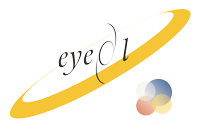Near-sightedness, also known as short-sightedness and myopia, is a condition of the eye where light focuses in front of, instead of on, the retina. This causes distant objects to be blurry while close objects appear normal. Other symptoms may include headaches and eye strain. Severe near-sightedness increases the risk of retinal detachment, cataracts, and glaucoma.
The underlying cause is believed to be a combination of genetic and environmental factors. Risk factors include doing work that involves focusing on close objects, greater time spent indoors, and a family history of the condition. It is also associated with a high socioeconomic class. The underlying mechanism involves the length of the eyeball growing too long or less commonly the lens being too strong. It is a type of refractive error. Diagnosis is by eye examination.
There is tentative evidence that the risk of near-sightedness can be decreased by having young children spend more time outside. This may be related to natural light exposure. Near-sightedness can be corrected with eyeglasses, contact lenses, or surgery.Eyeglasses are the easiest and safest method of correction. Contact lenses can provide a wider field of vision; however are associated with a risk of infection. Refractive surgery permanently changes the shape of the cornea.
Near-sightedness is the most common eye problem and is estimated to affect 1.5 billion people (22% of the population). Rates vary significantly in different areas of the world. Rates among adults are between 15 and 49%. Rates are similar in males and females. Among children it affects 1% of rural Nepalese, 4% of South Africans, 12% of Americans, and 37% in some large Chinese cities. Rates have increased since the 1950s. Uncorrected near-sightedness is one of the most common causes of vision impairment globally along with cataracts, macular degeneration, and vitamin A deficiency.
Signs and symptoms:
A myopic individual can see clearly out to a certain distance, but everything further becomes blurry. If the extent of the myopia is great enough, even standard reading distances can be affected. Upon routine examination of the eyes, the vast majority of myopic eyes appear structurally identical to non-myopic eyes. In cases of high myopia, a staphyloma can sometimes be seen on fundoscopic examination. Because the most significant cause of myopia is the increase in axial length of the eye, the retina must stretch out to cover the increased surface area. As a result, the retina in myopic patients can become thin and might develop retinal holes and lattice degeneration in the periphery. High myopia increases the risk of retinal tears and detachment.


Causes:
A 2012 review could not find strong evidence for any cause, although many theories have been discredited. A 2015 review found that spending a lot of time looking at objects that are close increases the risk.
Because twins and relatives are more likely to get myopia under similar circumstances, a hereditary factor was suspected. However, a hereditary nature of myopia has been ruled out by observing the experience of ethnicities transitioning to a modern (industrial and urban) lifestyle: around the 1960s, while the older generation of the Inuit in Canada had nearly no cases of near-sightedness, between 10 and 25 percent of the next generation was myopic, which would have been impossible if genetics were a deciding factor. A relationship between the length of time of exposure to sunlight (by being outdoors) and a lesser incidence of myopia has been observed, which would explain the growth in incidence as people begin spending more time indoors.
Myopic shifts seen during growth spurts of childhood and adolescence, as well as in acromegaly, indicates a relationship between the timing of myopic development and the release of human growth hormone. However, the lack of correlation between height and myopia seems to suggest the relationship between human growth hormone and myopia is complex.
Myopia has been increasing rapidly throughout the developed world, suggesting environmental factors must be important. Quite similarly, the mechanisms of emmetropization are still unclear. Emmetropization is the process by which a child's eye grows and changes to become less hyperopic. It is thought that the same triggers and signals that cause this growth may also play a role in the eye growing beyond the point of emmetropia and into myopia.
Diagnosis:
A diagnosis of myopia is typically made by an eye care professional, usually an optometrist or ophthalmologist. During a refraction, an autorefractor or retinoscope is used to give an initial objective assessment of the refractive status of each eye, then a phoropter is used to subjectively refine the patient's eyeglass prescription. Other types of refractive error are hyperopia, astigmatism, and presbyopia.
Treatment:
The National Institutes of Health says there is no known way of preventing myopia, and the use of glasses or contact lenses does not affect its progression. There is no universally accepted method of preventing myopia and proposed methods need additional study to determine their effectiveness. Optical correction using glasses or contact lenses is the most common treatment; other approaches include orthokeratology and refractive surgery. Medications (mostly atropine) and vision therapy can be effective in addressing the various forms of pseudomyopia.
